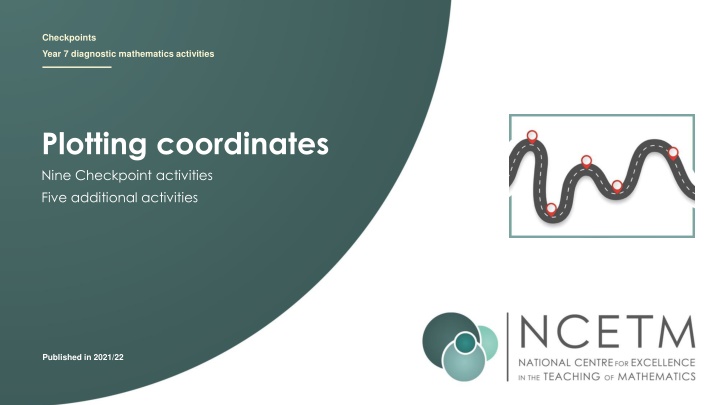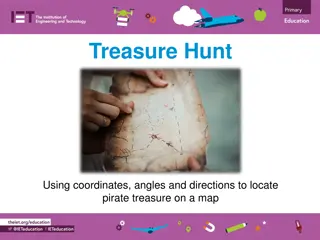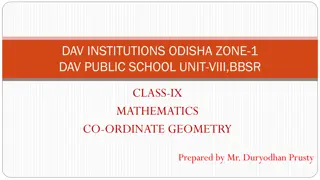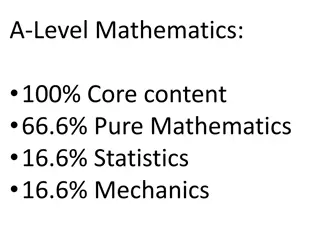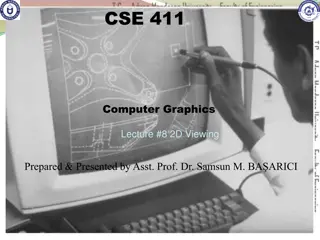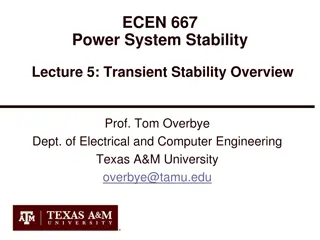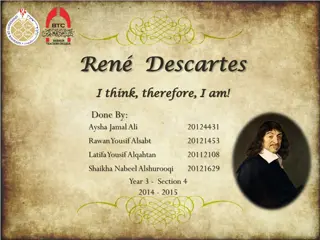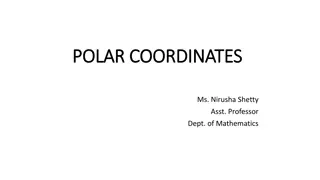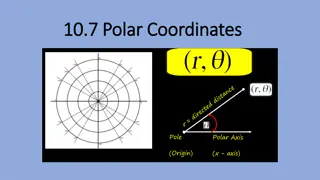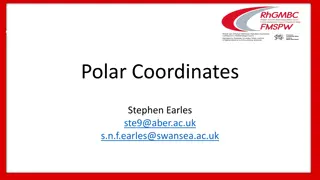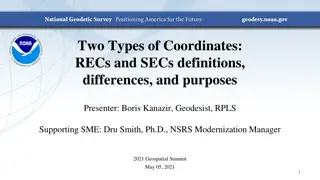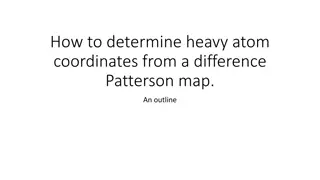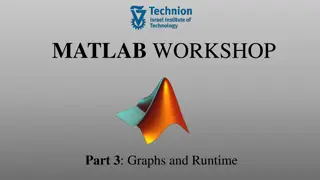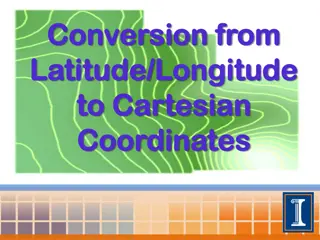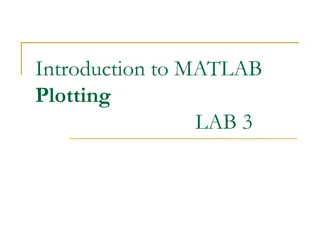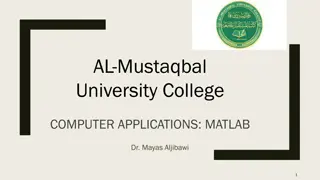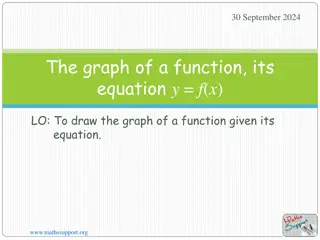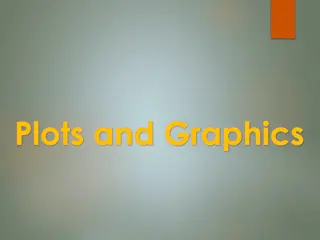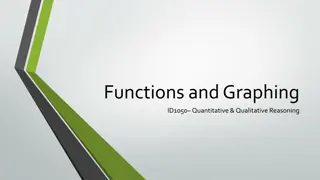Interactive Mathematics Activities for Year 7: Plotting Coordinates and More
Engage in a series of nine checkpoint activities focusing on plotting coordinates, including scenarios like ant movements, pirate treasure hunts, high and low points, and understanding coordinate axes. Dive into fun challenges and develop key skills in mathematics while exploring various coordinate grid scenarios. Published in 2021/22, these activities offer an interactive learning experience for Year 7 students.
Download Presentation

Please find below an Image/Link to download the presentation.
The content on the website is provided AS IS for your information and personal use only. It may not be sold, licensed, or shared on other websites without obtaining consent from the author.If you encounter any issues during the download, it is possible that the publisher has removed the file from their server.
You are allowed to download the files provided on this website for personal or commercial use, subject to the condition that they are used lawfully. All files are the property of their respective owners.
The content on the website is provided AS IS for your information and personal use only. It may not be sold, licensed, or shared on other websites without obtaining consent from the author.
E N D
Presentation Transcript
Checkpoints Year 7 diagnostic mathematics activities Plotting coordinates Nine Checkpoint activities Five additional activities Published in 2021/22
Checkpoints 19 Checkpoint 1: Ant moves 2: Pirate treasure 3: High points and low points 4: Awkward axes 5: Origin stories 6: Triangle possibilities 7: A trio of triangles 8: Imagining triangles Underpins Code Describe and plot coordinates 4.2.1* 9: Let s go fly a kite *This three-digit code refers to the statement of knowledge, skills and understanding in the NCETM s Sample Key Stage 3 Curriculum Framework (see notes below for more information).
Describe and plot coordinates Checkpoints 1 9
Checkpoint 1: Ant moves y An ant starts at (1, 2) on a coordinate grid. It can move only horizontally or vertically, along the grid lines. It always moves three units at a time. Write the coordinates of all the points where the ant might stop. x How would your answers change if the ant started at (-1, 2)?
Checkpoint 2: Pirate treasure y Write the coordinates of point X. a) b) Xdoesn t mark the spot! Read the instructions below and write the coordinates after each step. Where is the treasure buried? X To find the treasure, move: 1. three steps left 2. one step down 3. four steps right and one down 4. five steps left. The treasure is buried here! x The pirate s map is back to front! Reflect your points in the y-axis. Where is the treasure now? How would this change if the map was upside down, and you reflected in the x-axis?
Checkpoint 3: High points and low points a) Max zooms in on one part of the coordinate grid. Fill in the gaps to give the coordinates of each point: A (4, __) B (__, 98) C (1, __) D (__, __) E (__, 94) b) Jodie zooms in on a different part of the coordinate grid. Her points are in the same arrangement, but coordinates are different: A is now (1, -50). What are the other coordinates? What might your five coordinates be if you zoomed in on a different part of the coordinate grid?
Checkpoint 4: Awkward axes The coordinates of point A are (1, 6). a) What values should be on the grid lines on the x- and y-axes? b) Fill in the gaps to give the coordinates of each point: B (__, __) C (__, __) D (__, __) E (__, __) y Which of your coordinates would need to change if A was (5, 6)? x
Checkpoint 5: Origin stories Three points are plotted on a coordinate grid. One of the points is (0, 0). a) If the pink point is (0, 0), what are the possible coordinates of the green and blue points? If the blue point is (0, 0), what are the possible coordinates of the pink and green points? If the green point is (0, 0), what are the possible coordinates of the blue and pink points? b) c) The origin is between the green and the pink points. What might the coordinates of the blue point be?
Checkpoint 6: Triangle possibilities y Two vertices of a triangle, A and B, are plotted. a) Write the coordinate of a third point, C, to complete the shape. Is there more than one possible answer? b) Can you find coordinates that make: i. a right-angled triangle ii. an isosceles triangle iii. a triangle with an x-coordinate that is greater than B? x Using A and B as your starting points, can you create a triangle with an area of 10 cm2?
Checkpoint 7: A trio of triangles The blue triangle is identical to the green triangle and directly above it. The coordinates of the green triangle are: A (3, 6) B (4, 9) C (5, 6) Write down the coordinates of D, E and F. A third identical triangle is to be drawn beside the blue triangle, so that they share a vertex at F. What are the coordinates of the other two vertices of the new triangle?
Checkpoint 8: Imagining triangles a) b) Each set of coordinate pairs a to d is used to plot a triangle. Match the coordinates to the triangles. (3, 6) (7, 6) (3,11) (3, 6) (7, 6) (5,11) Blue Green Orange Red d) c) (3, 6) (7, 6) (5,1) (3, 6) (7, 6) (8, 8) Create new sets of coordinate pairs describing the four triangles that include negative coordinate values.
Checkpoint 9: Lets go fly a kite y The points (3, -4), (3, 2) and (5, -1) are marked on the coordinate grid. They are the first three vertices of a shape. a) Add another coordinate to create a kite. b) Choose another coordinate to create a different kite. How many different kites can you create with the same starting points? x Choose four coordinates to create a kite that is the same size as the one in part a, but rotated by 90 .
Additional activities Activities A E
Activity A: Estimating points Points A, B, C, D and E are plotted. The coordinates of point B are (7, 7) and the coordinates of point C are (5, 5). a) Estimate the coordinates of A and D. b) Write the coordinates of three more points on the red line. c) Write the coordinates of three more points on the orange line. d) Where do the two lines cross? How do you know? Estimate the coordinates of E. What other coordinates would be on the horizontal line that goes through E? How about the vertical line?
Activity B: (4, 3)? a) What does (4, 3) have to do with each of these diagrams? b) What s the same and what s different in each case? B A C D How would the images change if one of the coordinate values was negative?
Activity C: Where are the axes? Where are the axes if: a) A is (2, 3) and E is (5, 1) b) A is (-2, 3) and E is (1, 1) c) A is (3, -2) and E is (6, -6) d) A is (-2, 3) and E is (1, -1)? Where might the axes be if there was at least one point in all four quadrants?
Activity D: Missing coordinates Write the missing coordinates for each of these isosceles triangles. (_, _) (4, _) (-2, 1) Plot your own isosceles triangle. What is the minimum information you must give to make all the coordinates identifiable? (6, _) (_, _) (1, -2) (6, 4) (_, 1) (1, _) (_, _) (_, _) (6, -3)
Activity E: Changing the triangle Using the coordinate grid: a) Write three coordinate pairs that make a triangle using only whole- number coordinates. b) Change oneof your coordinate pairs so that the triangle has a vertex on the y-axis. c) Change oneof your coordinate pairs so that the triangle has an edge that is vertical. d) Change one number in your coordinates so that the triangle becomes taller. e) Change twocoordinate pairs so that each vertex of the triangle is in a different quadrant. f) Change onecoordinate pair so that the triangle has a right angle. Try this again with a different set of coordinates but without using the coordinate grid to help you.
y y x x
Blue Red Orange Green Blue Red Orange Green
y y x x
C B A D C B A D C B A D
y x
